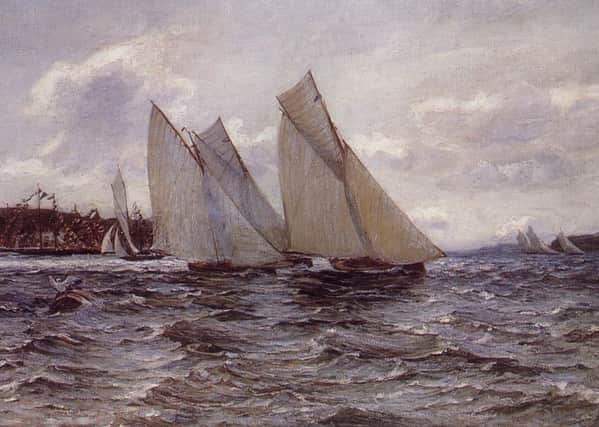Book review: Colin Hunter of the Holland Park Circle, By Godfrey Bell


Then in the early 1870s he moved to London, where his success was such that in 1876 he moved to Melbury Road off Holland Park. That may sound an unexciting London address, but at the time it was the place to live if you were an artist. It is a street of mansions built by the likes of Lord Leighton and William Holman Hunt. Success indeed, therefore, but success in late Victorian times meant you were a maker of popular art, not necessarily of good art. Nevertheless, Hunter was pretty good. His best pictures have an authentic feel and generally he avoids sentimentality.
Godfrey Bell’s book about Hunter is not exactly a biography. It is too schematic for that, and consists mostly of a catalogue of Hunter’s pictures – the “largest known”, according to the work’s subtitle. The author says he was prompted to write it by moving to Melbury Road himself, not into one of the Victorian mansions but to a flat in a block built on the site of no 14, Hunter’s house, which, alone on the street, had been taken out neatly by a German bomb.
Advertisement
Hide AdThis is indeed an excellent catalogue, documenting in detail the pictures’ provenance, exhibition history and any contemporary commentary where it exists. It also documents his prints. The reproductions are good, and where a picture’s present whereabouts is unknown, contemporary illustrations are reproduced where possible.
A striking example of the latter is a nine-foot painting of the Thames, now lost, but exhibited at the RA in 1900. It is a shame, however, that the list of works in public collections doesn’t seem to have been matched with the catalogue, as several are omitted.
The biography, along with an account of Hunter’s house in Melbury Road and of the street’s remarkable social circle, take up the first five chapters, but that’s barely 40 pages including a great many illustrations. There is no attempt to explore his art or to try to place it. His relationship to McTaggart is clearly of great interest, not just for the light it might throw on Hunter, but on McTaggart too. It gets just one short paragraph concluding with the tantalising conjecture that they “became firm painting buddies for the next ten or so years”.
GP Chalmers, whose remarkable landscapes also clearly find an echo in Hunter’s work, gets no mention at all. Hunter painted regularly in Scotland throughout his career, as his subjects bear witness. He was collected by James Orchar, a leading supporter of McTaggart and other Scottish painters (at one point in the book he appears as “Orchard”) but the implications for Hunter’s place in Scottish painting are not examined.
What the book does do is admirable. It is, however, a shame it does not do just a little more. Hunter is a neglected major painter, but this book only partly retrieves him from obscurity. - Duncan Macmillan
Colin Hunter of the Holland Park Circle: His Life And Melbury Road Home, by Godfrey Bell, Unicorn Press, £30